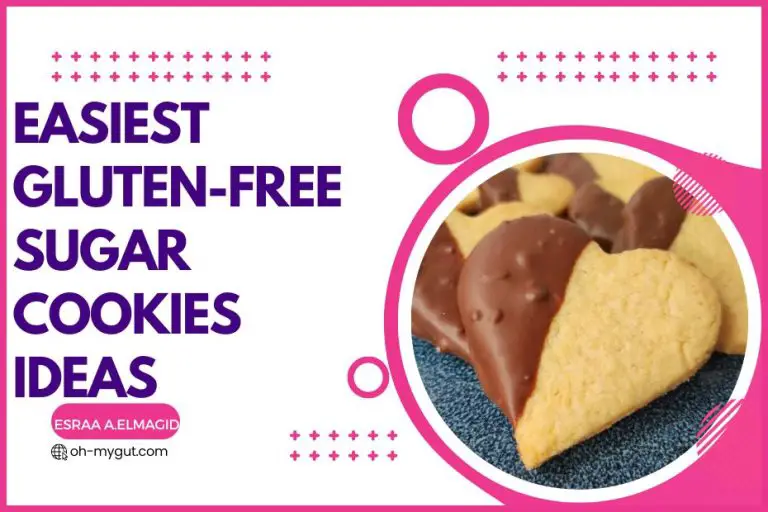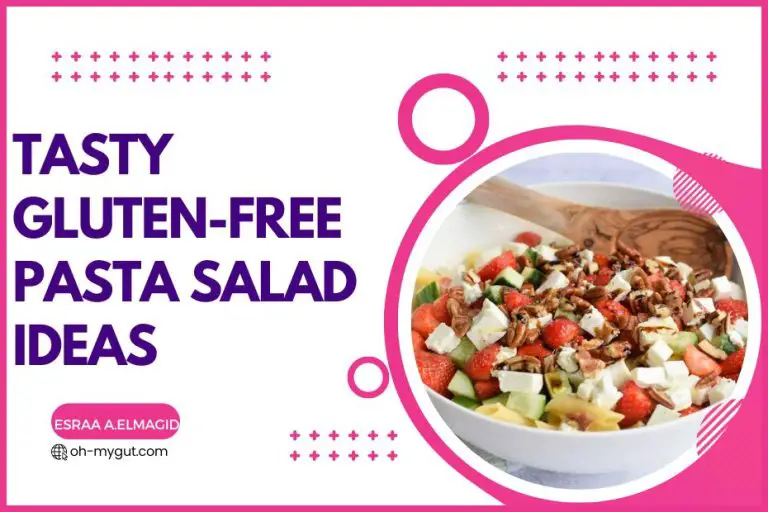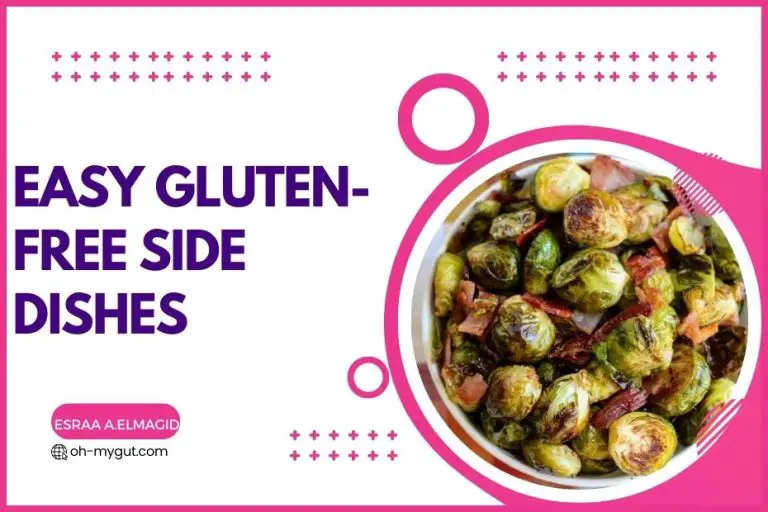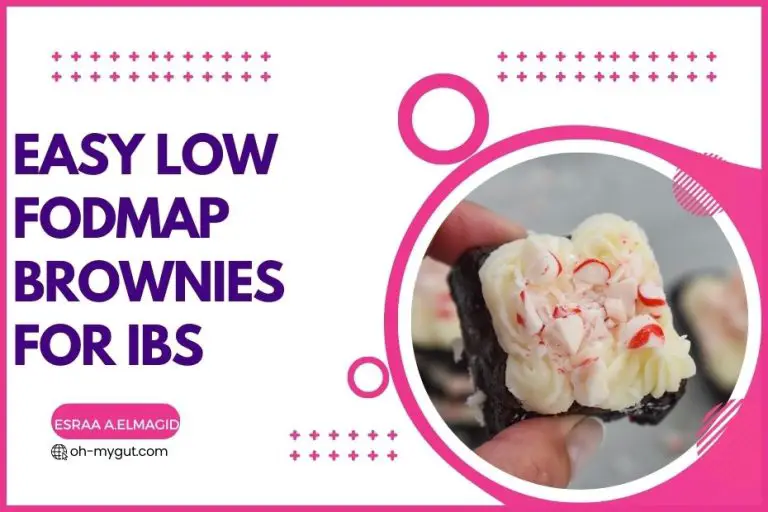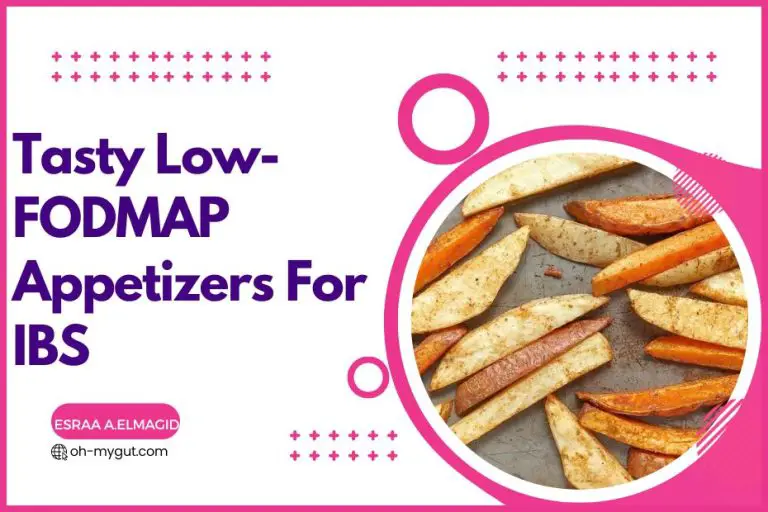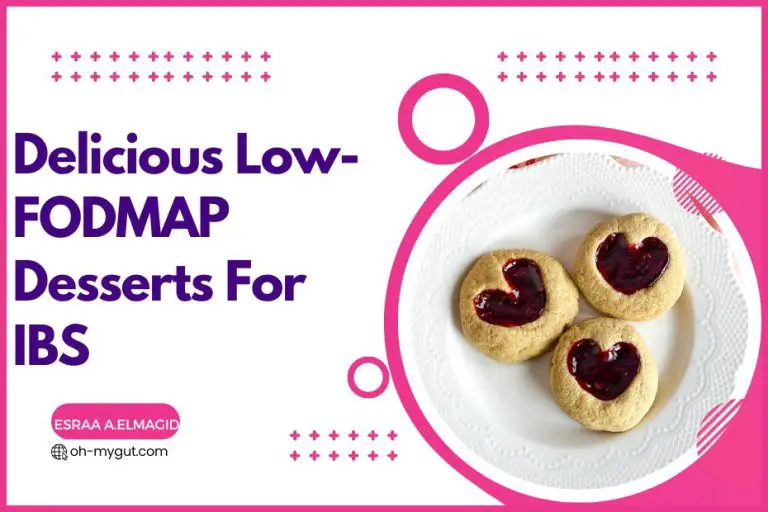Diet for Pyloric Stenosis in Adults: A Comprehensive Guide + Recipies.
Our content is not intended nor recommended as a substitute for medical advice by your doctor. Use for informational purposes only.
Pyloric stenosis is a condition that affects the passage from the stomach to the small intestine, known as the pylorus. While it’s more common in infants, adults can also experience it.
This comprehensive guide provides insights into the causes, symptoms, and treatments of pyloric stenosis in adults. It also offers dietary advice and recipes to help manage the condition and promote healing.
Key Facts:
- Pyloric stenosis in adults is often caused by peptic ulcers, inflammation, scar tissue, stomach surgery, or, rarely, stomach cancer.
- Common symptoms include persistent vomiting, feeling full after eating a small amount, weight loss, and stomach pain.
- Dietary interventions can play a crucial role in managing the condition.
- Dietary tips include consuming small, frequent meals, staying hydrated, consuming soft or liquid foods, limiting high-fiber and high-fat foods, and avoiding alcohol and caffeine.
- Recipe ideas for adults with pyloric stenosis can include smoothies, cream of wheat or rice, egg whites, oatmeal, avocado smoothie, chicken soup, mashed potatoes and gravy, poached fish, rice porridge (congee), pasta, tofu stir fry, steamed chicken and vegetables, baked fish, risotto, turkey meatloaf, vegetable soup, baked tofu and quinoa, egg noodles, and roasted chicken with rice.
Basic Facts About Pyloric Stenosis in Adults
Pyloric stenosis is a condition in which the opening from the stomach into the small intestine (known as the pylorus) becomes narrowed (reference). This narrowing prevents food from moving from the stomach to the intestine for digestion. While the condition is commonly associated with infants, it can indeed occur in adults (reference).
Common Causes of Pyloric Stenosis in Adults
Pyloric stenosis in adults is often caused by scarring due to stomach ulcers or inflammation. In some cases, it may be a late complication of stomach surgery, such as a gastric bypass. Rarely, certain stomach cancers can cause pyloric stenosis.
1. Peptic Ulcers:
Peptic ulcers are open sores that develop on the inside lining of your stomach, upper small intestine, or esophagus (reference). The most common cause of peptic ulcers is an infection with the bacterium Helicobacter pylori (H. pylori). Another cause is the long-term use of nonsteroidal anti-inflammatory drugs (NSAIDs), such as aspirin and ibuprofen.
2. Inflammation or Scar Tissue:
Chronic inflammation of the stomach lining or scar tissue resulting from surgery can cause the pylorus to narrow.
3. Stomach Surgery:
Pyloric stenosis can be a late complication of stomach surgery. This includes surgeries like gastric bypass, where the stomach size is significantly reduced.
4. Stomach Cancer:
In rare cases, a tumor in the stomach or the nearby area can cause the pylorus to narrow (reference).
Symptoms and When to See a Doctor
Pyloric stenosis in adults can cause various symptoms, some of which can be distressing. Common symptoms include:
- Persistent Vomiting: Often projectile, and it may contain undigested food or be “coffee-ground” in appearance due to the presence of old blood.
- A feeling of Fullness after Eating a Small Amount: This is due to the slow emptying of the stomach.
- Weight Loss: This can occur due to inadequate intake and malabsorption of nutrients.
- Stomach Pain: This can be particularly noticeable after eating.
If you’re experiencing these symptoms, particularly if they’re persistent or severe, it’s important to see a doctor for a diagnosis. Delaying medical attention could lead to complications, including severe dehydration and significant weight loss.
Common Treatments
Treatment for pyloric stenosis in adults usually involves addressing the condition’s underlying cause, alleviating symptoms, and ensuring that food can pass from the stomach to the small intestine. Treatments may include:
- Medications: Drugs to reduce stomach acid may be prescribed to promote healing of the pylorus and relieve symptoms. If an H. pylori infection is present, antibiotics will also be prescribed.
- Endoscopic Therapies: These non-surgical treatments include balloon dilation, where a small balloon is inflated to widen the pylorus, and Botox injections, which can temporarily relax the pylorus muscles.
- Surgery: Surgery may be necessary in severe cases if other treatments are ineffective. Procedures can involve cutting through the thickened pyloric muscle to widen it (pyloroplasty), removing the pylorus (pleurectomy), or bypassing the pylorus entirely (gastroenterostomy).
Each patient’s treatment plan will be individualized based on their circumstances and overall health. With the right treatment, most adults with pyloric stenosis can achieve a good quality of life.
2. When (& when not) to eat with Pyloric stenosis?
Living with pyloric stenosis can feel like a food maze. Your symptoms, treatment, and weight loss all add to the complexity.
Pyloric stenosis can make it hard to keep food down, leading to nutrient deficiency and dehydration. A chat with a knowledgeable dietitian can be a lifeline. Here are some pointers:
- When to Eat: Small, nutrient-rich meals might work if your condition is mild and vomiting is minimal.
- When Not to Eat: A break from solid foods can help if vomiting is severe. In extreme cases, hospitalization for fluid and nutrient replenishment might be needed.
- Post-Surgery: After a pyloromyotomy, start with clear liquids, then gradually reintroduce regular foods.
- Long-Term: Post-recovery, a normal diet is usually fine, but heed your doctor’s advice.
Remember, these tips aren’t universal. Personalized advice from a dietitian or doctor is crucial.
For GOO patients, feeding methods depend on the obstruction’s severity and cause:
- Oral Feeding: Small, nutrient-dense meals if tolerated.
- NG Tube: A nose-to-stomach tube for decompression and nutrition.
- G Tube: A tube directly into the stomach for feeding.
- J Tube: A tube into the small intestine for direct feeding if needed.
- Parenteral Nutrition: Direct bloodstream nutrients when gastrointestinal feeding isn’t possible.
- Endoscopic Stenting: A stent to open the obstruction for normal eating.
Types of Dietary intervention for adults with pyloric stenosis.
For Pyloric stenosis adults and gastric outlet obstruction patients, feeding methods depend on the obstruction’s severity and cause:
- Oral Feeding: Small, nutrient-dense meals if tolerated.
- NG Tube: A nose-to-stomach tube for decompression and nutrition.
- G Tube: A tube directly into the stomach for feeding.
- J Tube: A tube into the small intestine for direct feeding if needed.
- Parenteral Nutrition: Direct bloodstream nutrients when gastrointestinal feeding isn’t possible.
- Endoscopic Stenting: A stent to open the obstruction for normal eating.
Best Diet Tips for patients with pyloric stenosis.
Suppose you or someone you know is dealing with adult pyloric stenosis or gastric outlet obstruction. In that case, it’s crucial to collaborate with a healthcare professional or a nutritionist to devise a personalized meal plan.
However, here are some general dietary guidelines that might be beneficial:
- Consume smaller, more frequent meals: Rather than three large meals, consider having five to six smaller meals throughout the day. This approach can lessen the amount of food that needs to pass through the stomach at a given time.
- Stay hydrated (especially with recurrent vomiting): Dehydration can be a potential issue, particularly if vomiting is a symptom. You have to drink ample fluids throughout the day. However, refrain from consuming large quantities of fluids during meals, as this can quickly fill the stomach.
- Go for soft or liquid foods: Foods that are soft or liquid can navigate through the stomach more easily. Such foods include soups, smoothies, and pureed foods.
- Limit High-Fiber Foods: Foods rich in fiber can be more challenging to digest and may intensify symptoms. These foods include whole grains, raw fruits and vegetables, and legumes.
- Incorporate Protein-Rich Foods: Protein is vital for healing and preserving muscle mass. Include protein-rich foods like lean meats, fish, eggs, dairy products, and protein shakes.
- Avoid Foods High in Fat: Foods high in fat can decelerate digestion and may aggravate symptoms. Try to restrict your consumption of fried foods, fatty meats, and high-fat dairy products.
- Refrain from carbonation, alcoholic beverages, and Caffeine: Both alcohol and caffeine can stimulate gastric acid production, which can intensify symptoms.
Please note these are general guidelines that may not suit everyone with GOO. Working with a healthcare provider is crucial to devise a diet plan catering to your needs and tolerances.
Recipe Ideas for adults with pyloric stenosis.
A. Breakfast recipe ideas.
Here are five breakfast ideas that someone with pyloric obstruction could potentially tolerate. It’s crucial to remember that tolerances vary, and these suggestions should not replace personalized advice from a healthcare provider or registered dietitian.
- Smoothies: Smoothies are made with non-acidic fruits like bananas, peaches, or pears, mixed with a protein source such as Greek yogurt or a protein powder, and a liquid like almond milk or coconut water. Adding a spoonful of nut butter can add healthy fats. Remember to blend it thoroughly to ensure a smooth consistency.
- Cream of Wheat or Rice: These are usually well-tolerated grains that can be cooked very soft. Add a bit of honey or maple syrup for sweetness if desired.
- Egg Whites: Egg whites are an excellent source of protein and are usually easy to digest. Make them scrambled for a softer consistency.
- Oatmeal: Make with water or non-dairy milk for added nutrition. Sweeten with a bit of honey or pure maple syrup. Do ensure it is cooked to a soft consistency.
- Avocado Smoothie: Blend a ripe avocado with a banana and a cup of almond milk or coconut water for a creamy, nutritious smoothie. You can add a handful of spinach for extra nutrients if this is tolerated.
Remember to start with small amounts to see how well each food is tolerated, and if discomfort or symptoms persist, it’s essential to consult a healthcare provider.
B. Lunch Recipe Ideas.
People with pyloric stenosis often must be cautious with their diet, focusing on easy-to-digest foods that don’t irritate the stomach. Here are six lunch ideas that might be tolerated
- Chicken Soup: A clear chicken soup with finely chopped vegetables can be soothing and easy to digest.
- Mashed Potatoes and Gravy: Mashed potatoes are generally well-tolerated. You can add some gravy for flavor, but make sure it isn’t too fatty.
- Poached Fish: Fish like salmon or cod can be poached and served with mashed peas or carrots.
- Rice Porridge (Congee): This Asian dish is made by cooking rice in a great deal of water until it breaks down and becomes creamy. It’s very gentle on the stomach and can be flavored with bits of chicken or vegetables.
- Pasta: Cooked until soft and served with a non-tomato-based sauce, like olive oil and a little garlic. Add a little bit of grated cheese for flavor, if tolerated.
- Tofu Stir Fry: Tofu is a good source of protein and can be easier to digest than meat. Stir fry with well-cooked, non-spicy, and non-acidic vegetables, and serve over white rice.
C. Dinner Recipe Ideas.
Here are eight dinner ideas, but remember that everyone’s tolerance can differ. Always consult your healthcare provider or a dietitian for personalized advice.
- Steamed Chicken and Vegetables: Steamed chicken breast with well-cooked vegetables like carrots, zucchini, or bell peppers.
- Baked Fish: A mild white fish like cod or hake can be baked and served with mashed sweet potato.
- Risotto: Made with arborio rice and a low-fat chicken or vegetable broth, adding well-cooked vegetables for nutrition.
- Turkey Meatloaf: Use lean ground turkey to create a less fatty meatloaf. Serve with a side of steamed vegetables.
- Vegetable Soup: A creamy, pureed soup with well-cooked vegetables like carrots, peas, or butternut squash.
- Baked Tofu and Quinoa: Cubes of tofu baked with herbs and served with quinoa. Add a side of steamed broccoli or spinach.
- Egg Noodles: Cooked until soft and served with a non-tomato-based sauce or olive oil and garlic.
- Roasted Chicken with Rice: Roast a chicken until tender and serve with soft-cooked rice. You can also have a side of well-cooked and soft vegetables.
Eating slowly, chewing thoroughly, and having small, frequent meals instead of a few large ones is important. If any food causes discomfort or other symptoms, it’s best to avoid it and consult a healthcare provider or dietitian.
FAQs:
How to introduce diet after pyloric stenosis surgery in adults?
The introduction of fluids and diet after pyloric stenosis surgery should be gradual and under the supervision of your healthcare provider. Initially, you may be advised to start with clear liquids, such as water, broth, or juice.
Once you can tolerate these, you can gradually move on to more substantial liquids like milk or meal replacement shakes. Eventually, you can add soft foods, such as mashed potatoes or pureed fruits, to your diet. As your body adjusts, you can slowly reintroduce solid foods. It’s important to monitor your symptoms and consult your healthcare provider throughout this process.
Can Adults have pyloric stenosis?
The primary type of pyloric stenosis (Hypertrophic Idiophatic pyloric stenosis) is most commonly diagnosed in infants but can occur in adults, although rare. In adults, it’s often caused by other underlying conditions, such as peptic ulcers, stomach cancer, or gastric polyps (secondary pyloric stenosis).
Is pyloric stenosis in adults rare?
Yes, pyloric stenosis in adults is rare. It’s most commonly seen in infants, usually within the first few weeks of life. When it does occur in adults, it’s typically due to an underlying condition like a peptic ulcer, stomach cancer, or a gastric polyp.
Can adult pyloric stenosis treated without surgery?
Treatment for adult pyloric stenosis often depends on the underlying cause. Sometimes, medication to reduce stomach acid and help heal ulcers may be effective. However, surgery may be necessary in many cases to remove the obstruction. Non-surgical treatments like balloon dilation during endoscopy may also be an option in some cases. It’s important to discuss treatment options with a healthcare provider.
- Evidence-based
- Written by a doctor.

